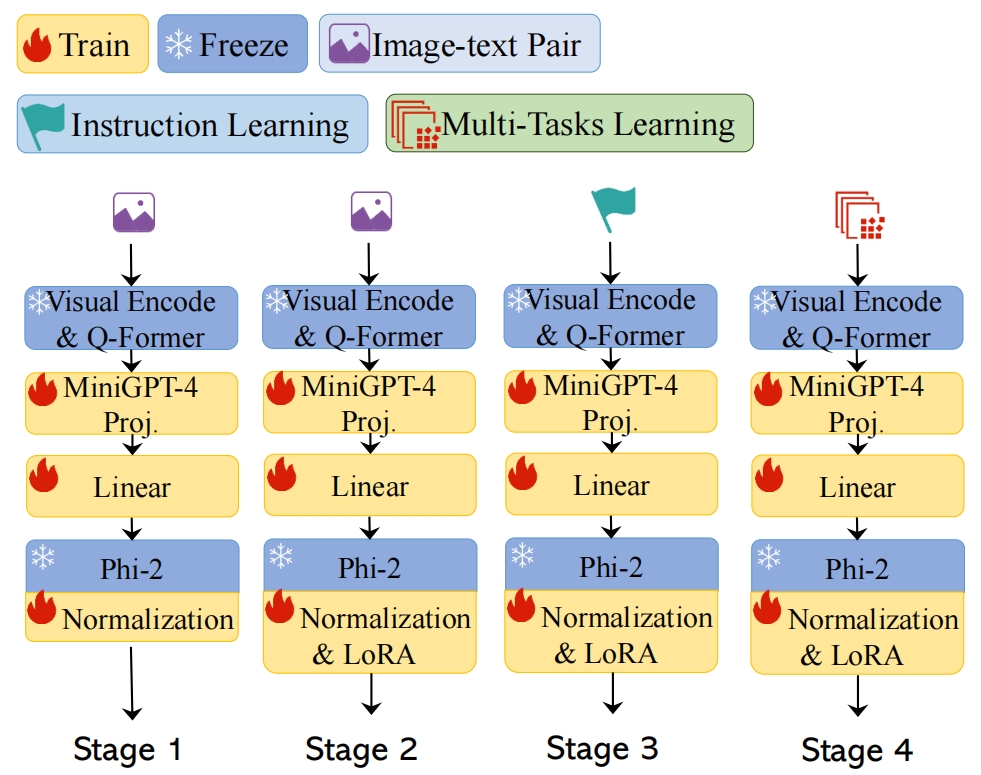TinyGPT-V: Efficient Multimodal Large Language Model via Small Backbones
In recent years, multimodal large language models (MLLMs) such as GPT-4V have demonstrated remarkable advancements, excelling in a variety of vision-language tasks. Despite their prowess, the closed-source nature and computational demands of such models limit their accessibility and applicability. This study introduces TinyGPT-V, a novel open-source MLLM, designed for efficient training and inference across various vision-language tasks, including image captioning (IC) and visual question answering (VQA). Leveraging a compact yet powerful architecture, TinyGPT-V integrates the Phi-2 language model with pre-trained vision encoders, utilizing a unique mapping module for visual and linguistic information fusion. With a training regimen optimized for small backbones and employing a diverse dataset amalgam, TinyGPT-V requires significantly lower computational resources 24GB for training and as little as 8GB for inference without compromising on performance. Our experiments demonstrate that TinyGPT-V, with its language model 2.8 billion parameters, achieves comparable results in VQA and image inference tasks to its larger counterparts while being uniquely suited for deployment on resource-constrained devices through innovative quantization techniques. This work not only paves the way for more accessible and efficient MLLMs but also underscores the potential of smaller, optimized models in bridging the gap between high performance and computational efficiency in real-world applications. Additionally, this paper introduces a new approach to multimodal large language models using smaller backbones. Our code and training weights are available in \url{https://github.com/DLYuanGod/TinyGPT-V}.
PDF Abstract






 GQA
GQA
 Conceptual Captions
Conceptual Captions
 Hateful Memes
Hateful Memes
 VizWiz
VizWiz